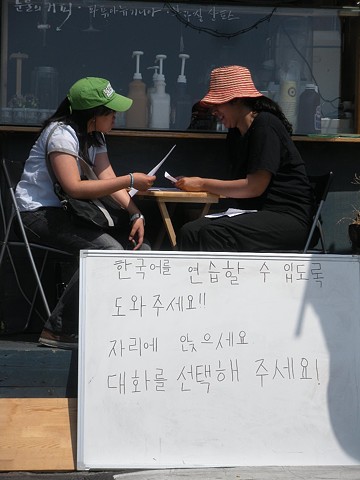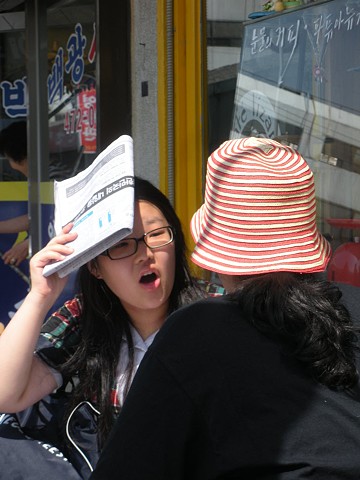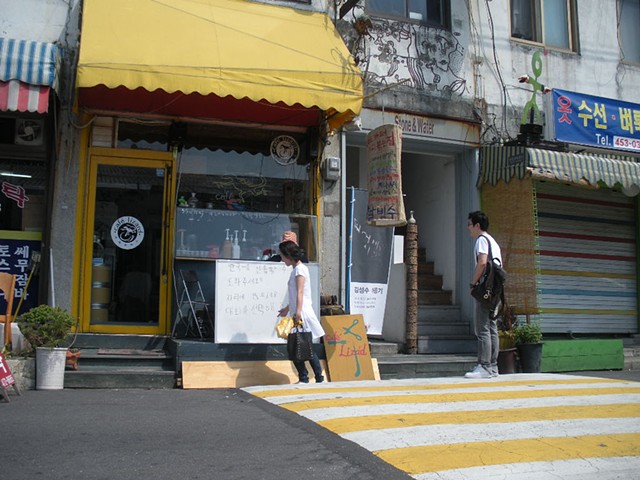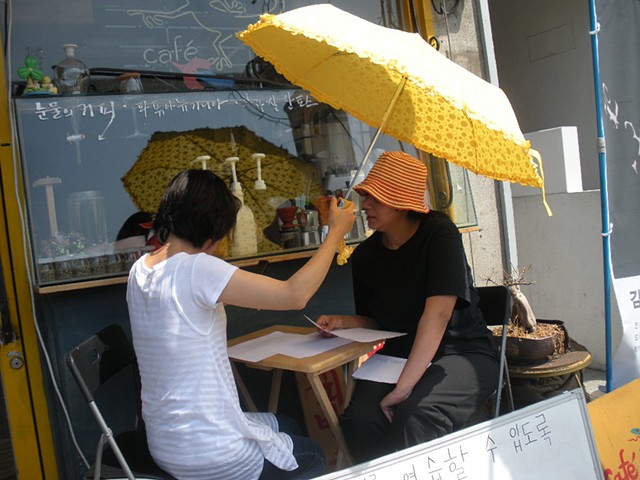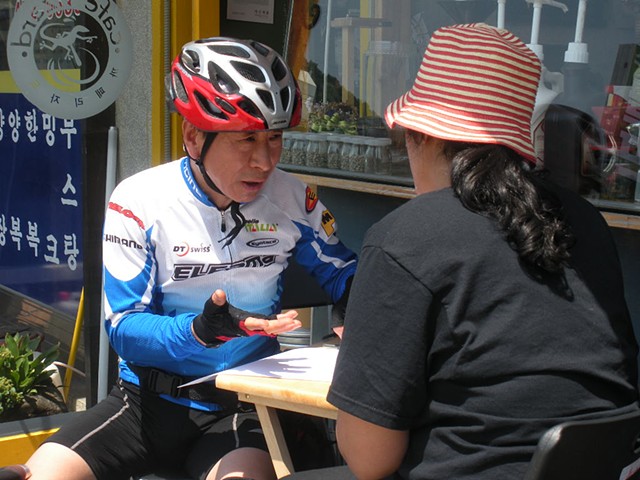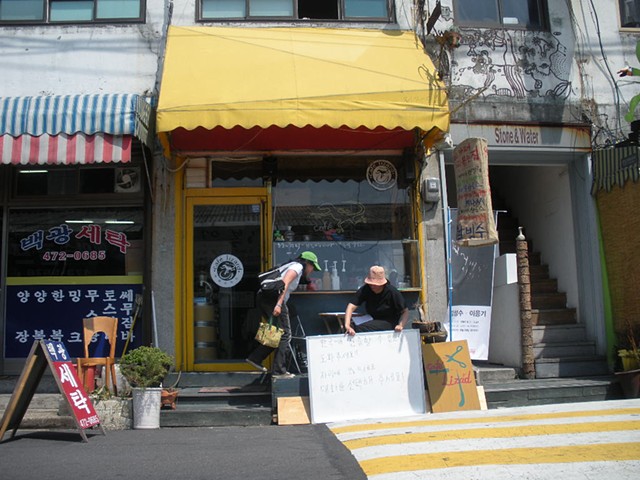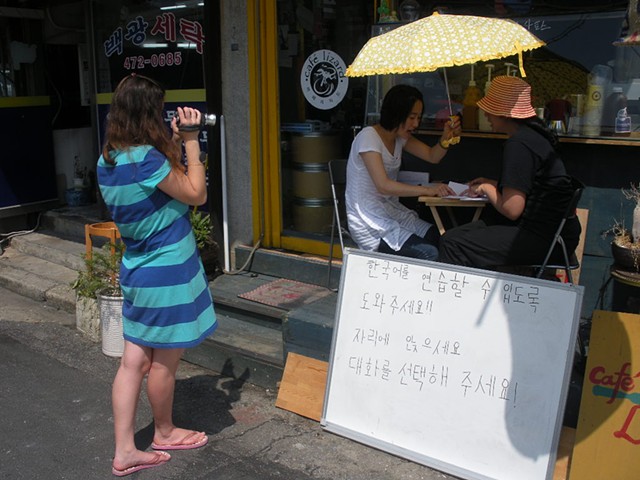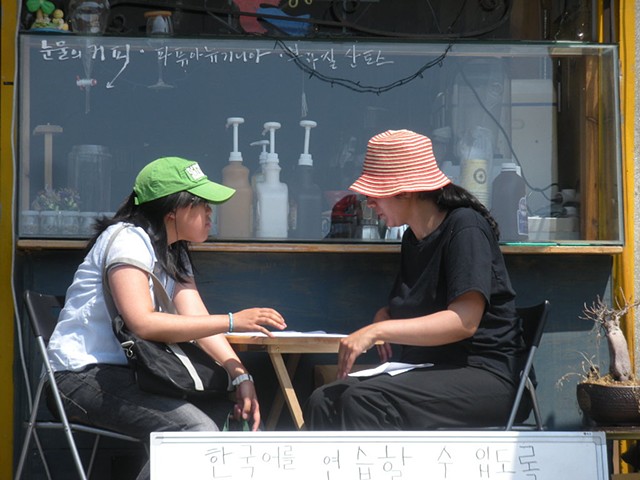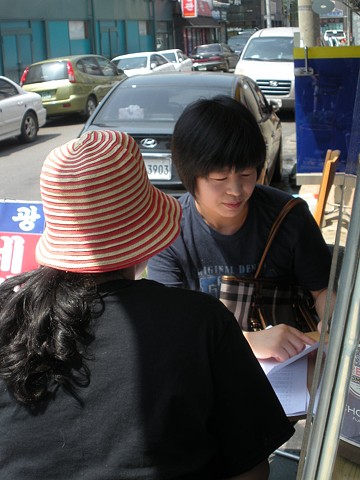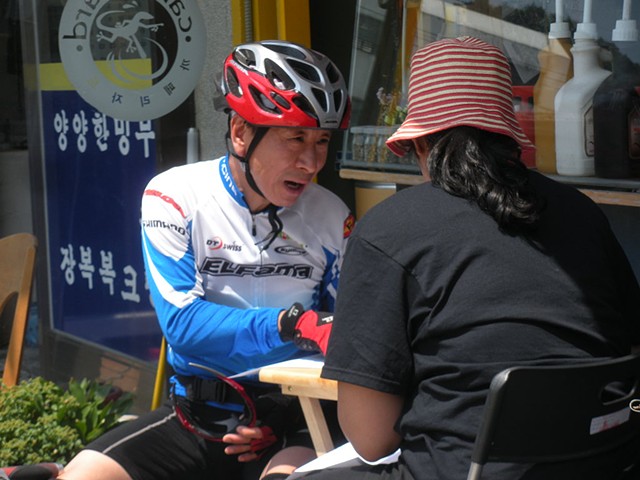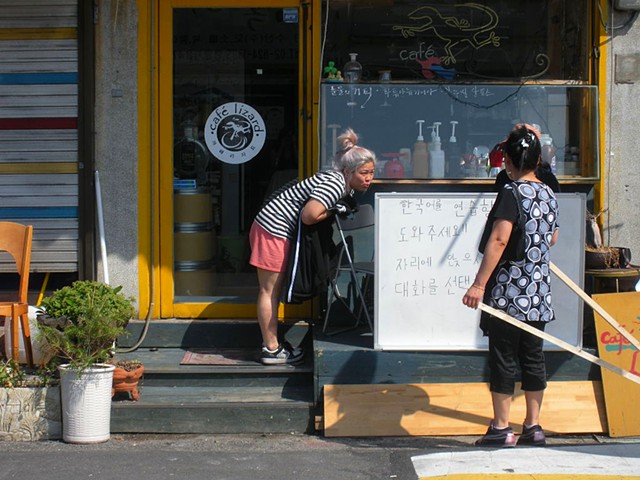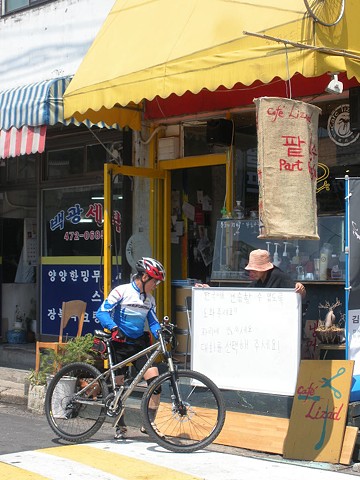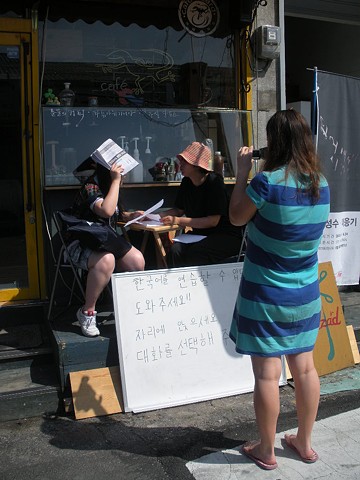Language: Words
In Language:Words, my first performance intervention in Korea, I invited passersby to help me practice Korean by engaging with three dialogues I selected from a dated phrasebook titled Gateway to Speaking Korean: Practical Text for Foreigners by the Association of Foreign Language Propagation, published in 1973. The phrasebook, a relic of an earlier era, contained formal and outdated phrases that would have felt alien to most contemporary Korean speakers. The dialogues offered no translation for me to reference, and I had no understanding of their meanings, making the exercise an act of trust, vulnerability, and exploration.
I set up a simple table with a sign inviting people to help me practice. The sign, written in both Korean and English, asked participants to take a seat, select a dialogue, and engage with me in conversation. The performance was an experiment in communication, relying on unspoken cues and the willingness of strangers to participate. Each encounter was colored by the awkwardness of trying to communicate with only partial understanding of the language, which reflected the discomfort and miscommunication that often accompanies language barriers.
The dialogues, written in a formal and now archaic style, heightened the distance between us, emphasizing the generational gap in language use and the struggles of attempting to connect through language without a shared, fluent command. Yet, despite these challenges, our encounters were moments of connection, looking at communication itself—how language, even when imperfect, can bring people together across cultural and linguistic divides.

